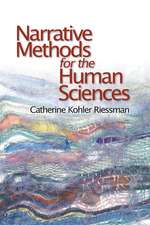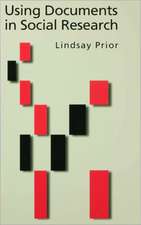Fuzzy Set Theory: Applications in the Social Sciences: Quantitative Applications in the Social Sciences, cartea 147
Autor Michael Smithson, Jay Verkuilenen Limba Engleză Paperback – 3 apr 2006
Din seria Quantitative Applications in the Social Sciences
-
 Preț: 323.09 lei
Preț: 323.09 lei -
 Preț: 285.10 lei
Preț: 285.10 lei -
 Preț: 285.33 lei
Preț: 285.33 lei -
 Preț: 274.06 lei
Preț: 274.06 lei -
 Preț: 285.37 lei
Preț: 285.37 lei -
 Preț: 321.52 lei
Preț: 321.52 lei -
 Preț: 330.81 lei
Preț: 330.81 lei -
 Preț: 322.61 lei
Preț: 322.61 lei -
 Preț: 321.79 lei
Preț: 321.79 lei -
 Preț: 323.15 lei
Preț: 323.15 lei -
 Preț: 273.46 lei
Preț: 273.46 lei -
 Preț: 275.42 lei
Preț: 275.42 lei -
 Preț: 277.33 lei
Preț: 277.33 lei -
 Preț: 322.06 lei
Preț: 322.06 lei -
 Preț: 286.18 lei
Preț: 286.18 lei -
 Preț: 285.71 lei
Preț: 285.71 lei -
 Preț: 322.06 lei
Preț: 322.06 lei -
 Preț: 321.52 lei
Preț: 321.52 lei -
 Preț: 322.30 lei
Preț: 322.30 lei -
 Preț: 285.47 lei
Preț: 285.47 lei -
 Preț: 322.61 lei
Preț: 322.61 lei -
 Preț: 321.79 lei
Preț: 321.79 lei -
 Preț: 323.15 lei
Preț: 323.15 lei -
 Preț: 323.36 lei
Preț: 323.36 lei -
 Preț: 322.41 lei
Preț: 322.41 lei -
 Preț: 323.42 lei
Preț: 323.42 lei -
 Preț: 322.61 lei
Preț: 322.61 lei -
 Preț: 284.99 lei
Preț: 284.99 lei -
 Preț: 285.47 lei
Preț: 285.47 lei -
 Preț: 284.99 lei
Preț: 284.99 lei -
 Preț: 289.18 lei
Preț: 289.18 lei -
 Preț: 287.82 lei
Preț: 287.82 lei -
 Preț: 316.12 lei
Preț: 316.12 lei -
 Preț: 288.96 lei
Preț: 288.96 lei -
 Preț: 316.71 lei
Preț: 316.71 lei -
 Preț: 314.98 lei
Preț: 314.98 lei -
 Preț: 317.26 lei
Preț: 317.26 lei -
 Preț: 314.60 lei
Preț: 314.60 lei -
 Preț: 289.95 lei
Preț: 289.95 lei -
 Preț: 289.18 lei
Preț: 289.18 lei -
 Preț: 315.36 lei
Preț: 315.36 lei -
 Preț: 314.98 lei
Preț: 314.98 lei -
 Preț: 314.38 lei
Preț: 314.38 lei -
 Preț: 316.33 lei
Preț: 316.33 lei -
 Preț: 316.51 lei
Preț: 316.51 lei -
 Preț: 314.76 lei
Preț: 314.76 lei -
 Preț: 288.41 lei
Preț: 288.41 lei -
 Preț: 316.51 lei
Preț: 316.51 lei
Preț: 289.95 lei
Nou
55.49€ • 60.25$ • 46.61£
Carte tipărită la comandă
Livrare economică 23 aprilie-07 mai
Specificații
ISBN-10: 076192986X
Pagini: 112
Dimensiuni: 140 x 216 x 6 mm
Greutate: 0.14 kg
Ediția:1
Editura: SAGE Publications
Colecția Sage Publications, Inc
Seria Quantitative Applications in the Social Sciences
Locul publicării:Thousand Oaks, United States
Recenzii
Cuprins
Acknowledgments
1. Introduction
2. An Overview of Fuzzy Set Mathematics
2.1 Set Theory
2.2 Why Fuzzy Sets?
2.3 The Membership Function
2.4 Operations of Fuzzy Set Theory
2.5 Fuzzy Numbers and Fuzzy Variables
2.6 Graphical Representations of Fuzzy Sets
3. Measuring Membership
3.1 Introduction
3.2 Methods for Constructing Membership Functions
3.3 Measurement Properties Required for Fuzzy Sets
3.4 Measurement Properties of Membership Functions
3.5 Uncertainty Estimates in Membership Assignment
4. Internal Structure and Properties of a Fuzzy Set
4.1 Cardinality: The Size of a Fuzzy Set
4.2 Probability Distributions for Fuzzy Sets
4.3 Defining and Measuring Fuzziness
5. Simple Relations Between Fuzzy Sets
5.1 Intersection, Union, and Inclusion
5.2 Detecting and Evaluating Fuzzy Inclusion
5.3 Quantifying and Modeling Inclusion: Ordinal Membership Scales
5.4 Quantified and Comparable Membership Scales
6. Multivariate Fuzzy Set Relations
6.1 Compound Set Indexes
6.2 Multiset Relations: Comorbidity, Covariation, and Co-Occurrence
6.3 Multiple and Partial Intersection and Inclusion
7. Concluding Remarks
References
Index
About the Authors
Notă biografică
Michael Smithson is a Professor in the Research School of Psychology at The Australian National University in Canberra, and received his PhD from the University of Oregon. He is the author of Confidence Intervals (2003), Statistics with Confidence (2000), Ignorance and Uncertainty (1989), and Fuzzy Set Analysis for the Behavioral and Social Sciences (1987), co-author of Fuzzy Set Theory: Applications in the Social Sciences (2006) and Generalized Linear Models for Categorical and Limited Dependent Variables (2014), and co-editor of Uncertainty and Risk: Multidisciplinary Perspectives (2008) and Resolving Social Dilemmas: Dynamic, Structural, and Intergroup Aspects (1999). His other publications include more than 170 refereed journal articles and book chapters. His primary research interests are in judgment and decision making under ignorance and uncertainty, statistical methods for the social sciences, and applications of fuzzy set theory to the social sciences.











